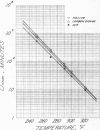Abstract
The heat resistance of dry bacterial spores was tested in various gases at temperatures ranging from 121.1 to 160 C (250 to 320 F). Spores of Clostridium sporogenes (PA 3679) were heated in air, carbon dioxide, and helium; spores of Bacillus subtilis 5230 were heated in these gases and also in oxygen and in nitrogen. The surrounding gas influenced the heat resistance, but the differences among gases were small. D values were about 7 min at 148.9 C (300 F); z values were about 18.3 C (33 F) for B. subtilis, and about 21.7 C (39 F) for C. sporogenes. The resistance of B. subtilis in carbon dioxide was about the same as in air, but lower than in all other gases; resistance in helium and nitrogen was about the same, and was higher than in all other gases. C. sporogenes had the least resistance in air; the resistance was about the same in carbon dioxide and helium. For B. subtilis, the gases in order of increasing heat resistance were carbon dioxide, air, oxygen, helium, and nitrogen, and for C. sporogenes, air, carbon dioxide, and helium. Neither oxygen content nor molecular weight of the gas appeared to have a marked influence on dry-heat resistance of the spores, whereas the more inert gases seemed to yield larger D values.
Full text
PDF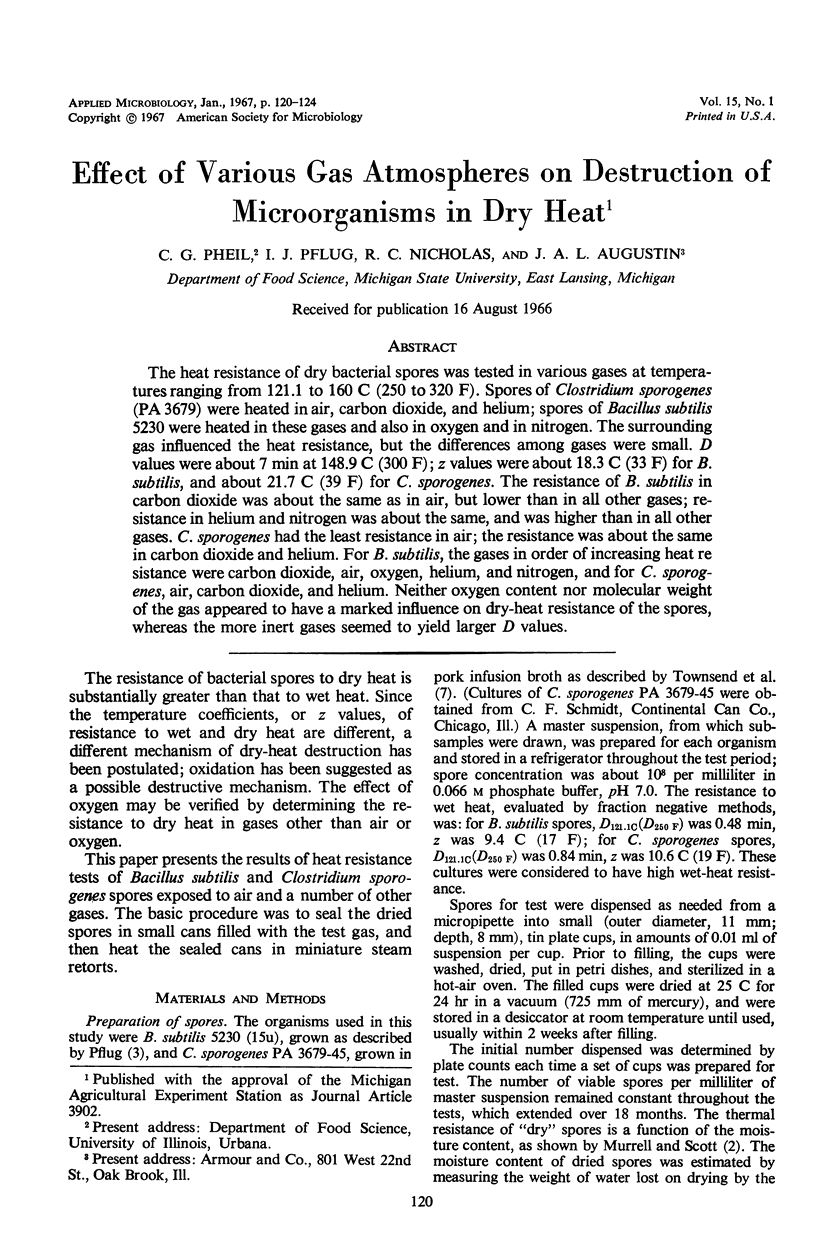
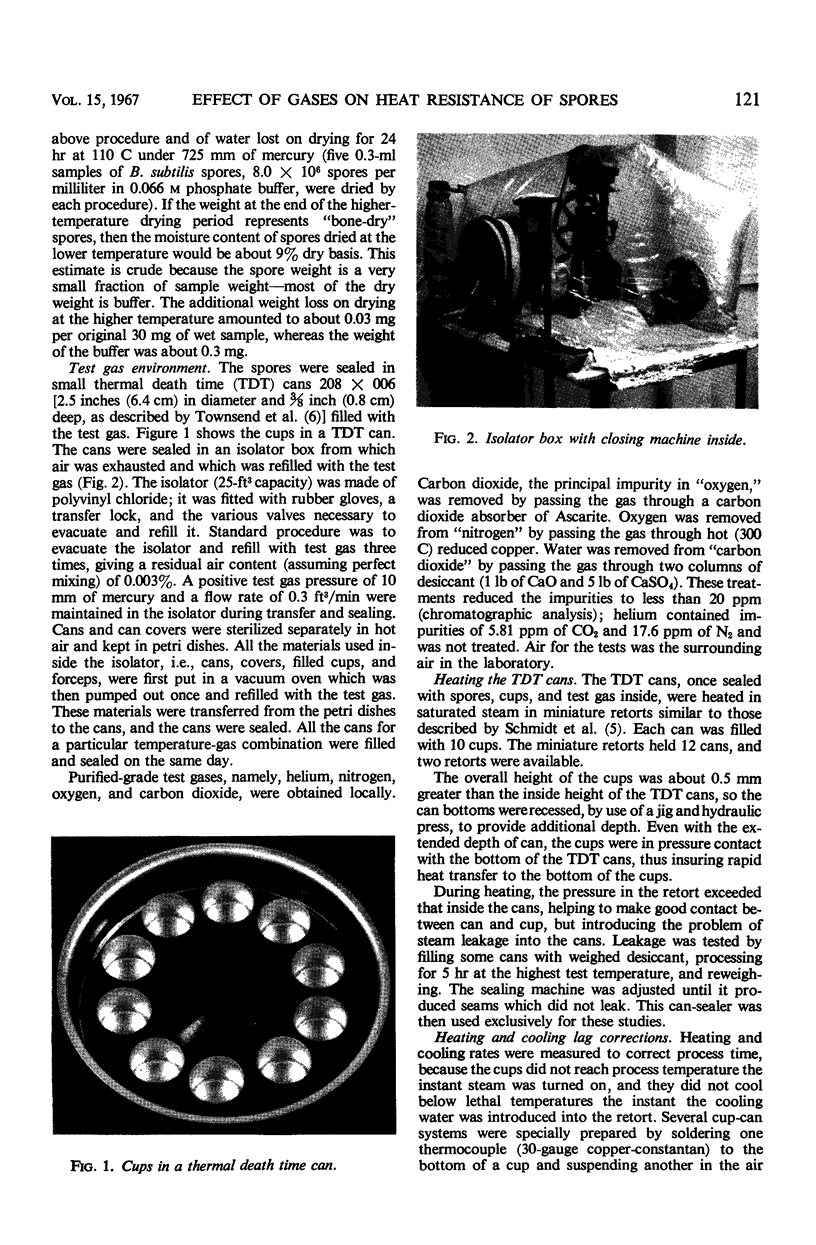
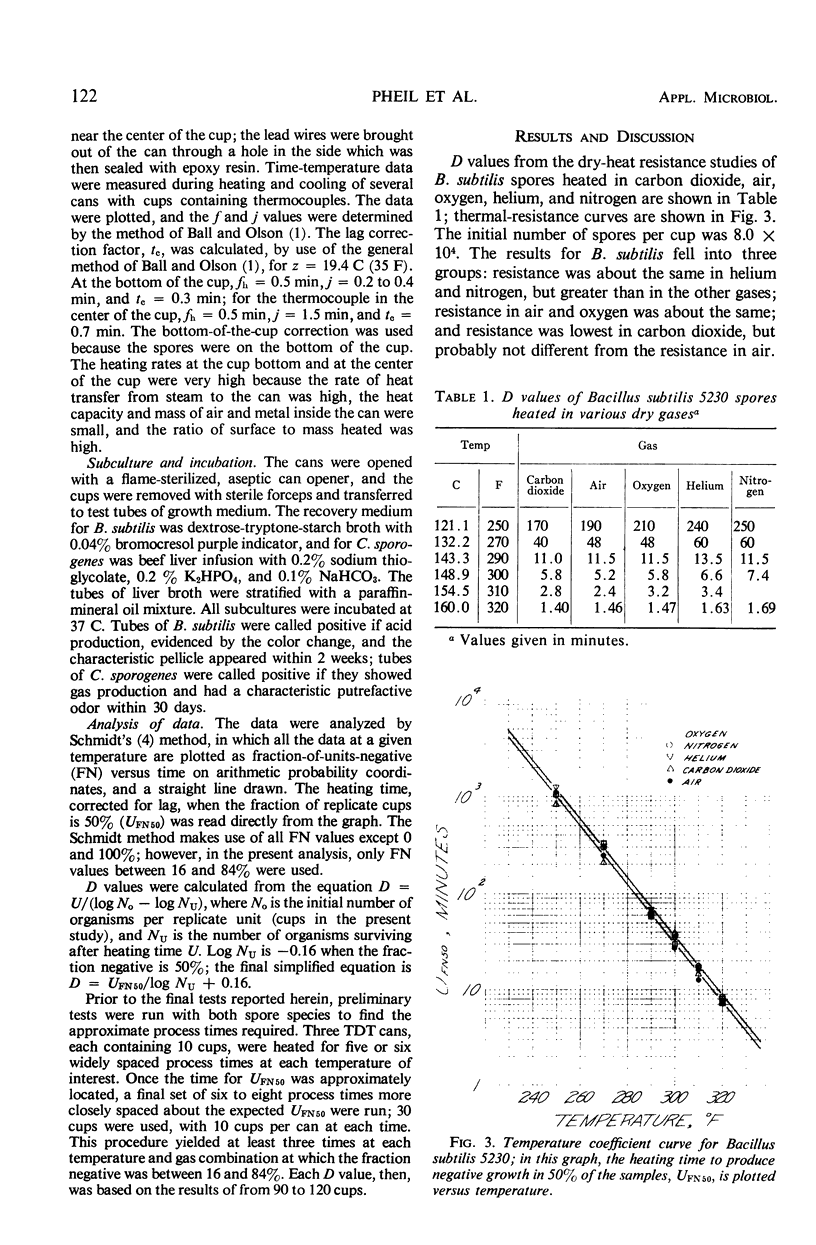
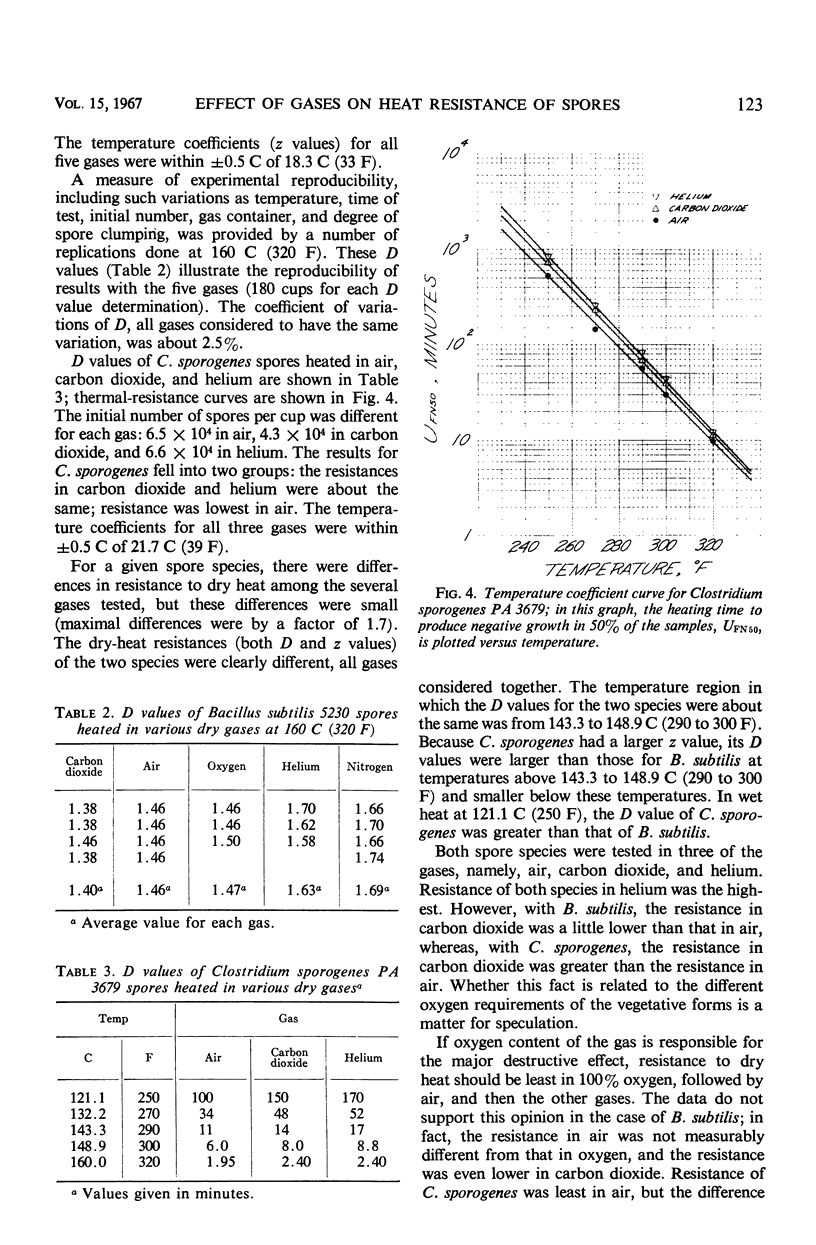
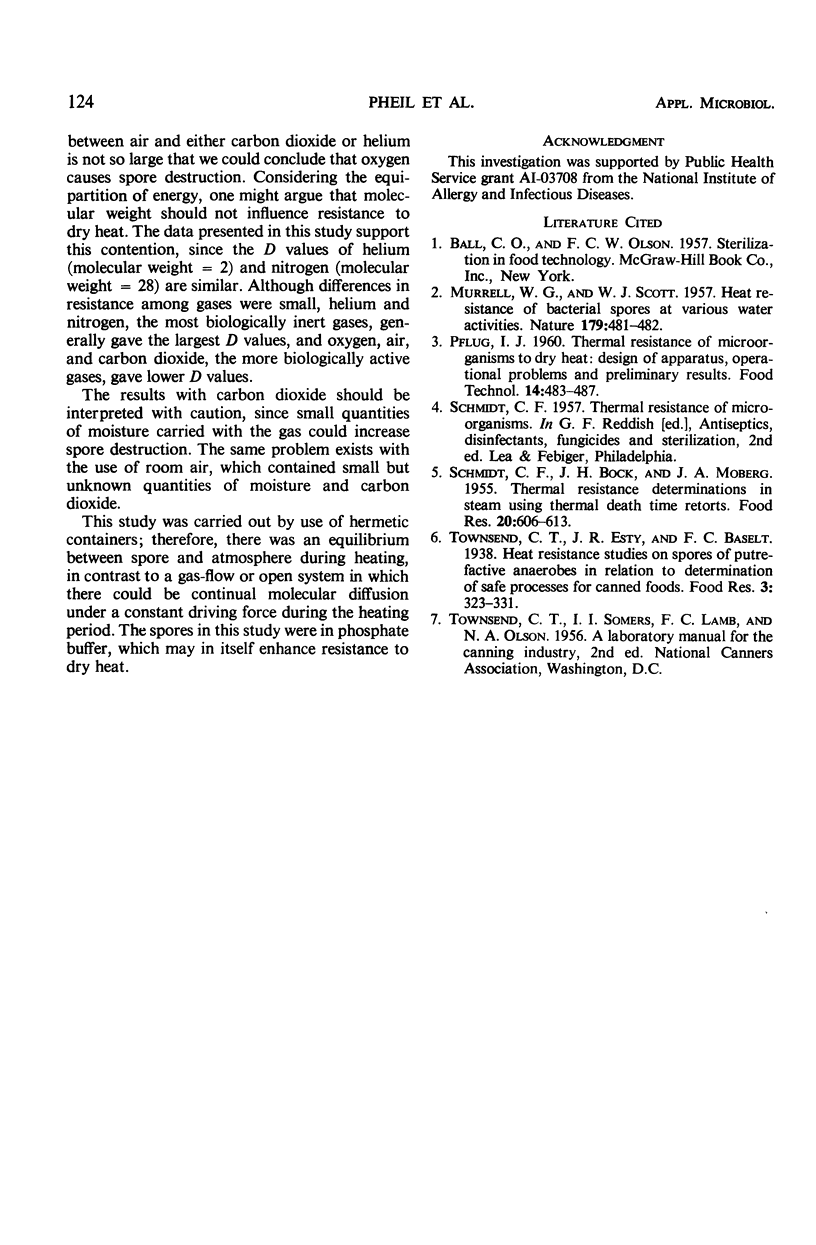
Images in this article
Selected References
These references are in PubMed. This may not be the complete list of references from this article.
- MURRELL W. G., SCOTT W. J. Heat resistance of bacterial spores at various water activities. Nature. 1957 Mar 2;179(4557):481–482. doi: 10.1038/179481a0. [DOI] [PubMed] [Google Scholar]






